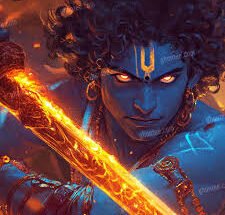
The Evolution of Bollywood Box Office Trends Over the Last Decade
Over the past decade, the Bollywood film industry has witnessed significant transformations in its box office trends. From the rise of multiplex culture to the increasing dominance of digital platforms, several factors have influenced how films perform financially. This article explores the major trends that have reshaped the box office landscape in Bollywood from 2014 to 2024.
1. The Rise of High-Budget Blockbusters Vs Bollywood Box Office
One of the most noticeable trends in the last decade has been the emergence of high-budget films with grand production values. Movies like Baahubali: The Beginning (2015), Dangal (2016), and Pathaan (2023) set new benchmarks for box office earnings, with their budgets often exceeding INR 200 crores. These films showcased larger-than-life storytelling, visual effects, and high production quality, making them major crowd-pullers.
Additionally, the star power of actors like Salman Khan, Shah Rukh Khan, Aamir Khan, and Akshay Kumar continued to dominate, with their films enjoying massive opening weekends. However, this trend also led to increased risks, as not all big-budget films managed to recover their costs.
2. The Impact of Multiplexes and Tier-2 & Tier-3 Cities
The expansion of multiplexes across urban and semi-urban areas played a crucial role in shaping the box office performance of Bollywood films. While single-screen theatres still hold cultural significance, multiplexes provided audiences with better viewing experiences, leading to higher ticket prices and increased revenue.
Additionally, smaller cities and towns emerged as significant contributors to box office collections. With improved infrastructure and access to digital payments, audiences in Tier-2 and Tier-3 cities became a lucrative market for Bollywood filmmakers.
3. The Growth of the 100-Crore, 200-Crore, and 300-Crore Clubs
In the early 2010s, entering the 100-crore club was considered a remarkable achievement. However, by the mid-2020s, box office benchmarks had shifted, with several films crossing the 200-crore and even 300-crore marks.
Movies like Dangal (2016), Sanju (2018), War (2019), Gadar 2 (2023), and Jawan (2023) demonstrated how a combination of strong storytelling, powerful performances, and effective marketing strategies could propel a film to record-breaking collections.
4. The Rise of Regional and Pan-India Cinema
The past decade saw an increasing influence of South Indian cinema on Bollywood’s box office. Films like Baahubali: The Conclusion (2017), Pushpa: The Rise (2021), and RRR (2022) achieved unprecedented success not just in their original languages but also in their Hindi-dubbed versions.
Bollywood also started collaborating with South Indian directors and actors, leading to a shift in storytelling styles. The success of pan-India films blurred linguistic barriers and opened up newer markets for Bollywood films.
5. The Shift Toward Content-Driven Cinema
While star-studded films continued to perform well, there was a noticeable shift towards content-driven cinema. Films like Andhadhun (2018), Article 15 (2019), Drishyam 2 (2022), and The Kashmir Files (2022) proved that strong narratives and engaging storytelling could outperform high-budget commercial films.
Audiences began favoring movies with realistic plots, social messages, and gripping narratives. This shift forced Bollywood filmmakers to rethink their strategies and invest in quality content rather than relying solely on star power.
6. The Impact of the COVID-19 Pandemic
The COVID-19 pandemic in 2020-21 had a devastating impact on the Bollywood box office. Theatres remained shut for months, causing massive losses for filmmakers and production houses. As a result, many films opted for direct-to-digital releases on streaming platforms like Netflix, Amazon Prime Video, and Disney+ Hotstar.
Post-pandemic, audience preferences changed significantly. While big-budget spectacle films like KGF: Chapter 2 (2022) and Brahmāstra (2022) performed well in cinemas, mid-budget films struggled to attract audiences back to theatres. This shift led to the emergence of a hybrid release model, where films had shorter theatrical windows before arriving on OTT platforms.
7. The Influence of OTT Platforms on Box Office Trends
The rise of OTT platforms has been one of the most significant disruptions in Bollywood’s box office trends. Audiences now have the option to watch films from the comfort of their homes, reducing their willingness to spend on theatre tickets.
Many films that failed to perform well in theatres found success on OTT platforms, proving that viewership patterns were changing. Filmmakers started designing content keeping streaming platforms in mind, leading to a diversification of storytelling formats.
8. The Power of Social Media and Word of Mouth
Social media platforms like Twitter, Instagram, and YouTube have become critical tools for film promotions. Online trends, fan reviews, and influencer endorsements can make or break a film within its first weekend.
Negative word-of-mouth spreads quickly, affecting footfalls in cinemas. Conversely, films like The Kashmir Files (2022) and Tumbbad (2018) gained traction purely through organic discussions and positive reviews on digital platforms.
9. Changing Audience Preferences and Experimental Storytelling
Bollywood has witnessed a shift in audience preferences, with younger generations favoring experimental storytelling. Directors like Anurag Kashyap, Sriram Raghavan, and Luv Ranjan have introduced unique narratives that challenge conventional Bollywood formulas.
Films like Stree (2018), Badhai Ho (2018), and Gehraiyaan (2022) explored unconventional themes, proving that audiences are open to diverse content as long as it is engaging and well-executed.
10. The Future of Bollywood’s Box Office
As we look ahead, Bollywood’s box office will continue to evolve. Several upcoming trends are expected to shape the industry:
- The increasing integration of AI and VFX in filmmaking.
- The growth of international collaborations and co-productions.
- The importance of hybrid release models, balancing theatrical and OTT viewership.
- The focus on franchise-building, with sequels and spin-offs gaining popularity.
While challenges remain, the Bollywood box office has proven its resilience over the years. The industry will need to adapt to changing audience preferences, technological advancements, and global market dynamics to sustain its growth in the coming decade.
Conclusion
The Bollywood box office has radically transformed over the past ten years. Multiple factors have contributed to the evolving landscape, from the dominance of high-budget films to the growing influence of OTT platforms. As audiences become more discerning, filmmakers must focus on quality content and innovative storytelling to keep the industry thriving.
As Bollywood moves forward, one thing remains certain—adaptability will be the key to success. The industry must continue to evolve with changing times, ensuring that it remains relevant and engaging for audiences worldwide.



One Comment on “The Evolution of Bollywood Box Office Trends.”
Comments are closed.